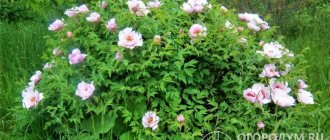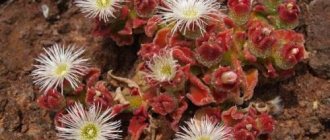Features of lupine
The legume called lupine is loved by flower growers for its decorative appearance and ease of care. She is very tenacious. Even a long absence of precipitation is not capable of destroying plants.
For the design of flower beds, preference is given to varietal perennial lupine. It pleases the eye with its variegated colors. It looks like an upright bush with beautiful palm-shaped leaves. The culture is blooming beautifully. The long peduncle, reaching a height of 100 cm, has a racemose shape. It is densely dotted with small flowers.
This representative of Legumes is characterized by a powerful root system that goes deep into the soil.
Green manure plant
Lupine is one of the most popular green manure plants. We are talking about crops grown in garden plots after harvesting. They prevent the growth of weeds, enrich the soil with useful substances and help restore its structure.
Growing lupine as a green manure ensures the saturation of the soil with potassium, nitrogen, phosphorus, and calcium. This is a simple and affordable way to fertilize your garden soil.
For this purpose, gardeners use exclusively annual lupine. Sowing its perennial varieties should be abandoned due to their high growth rate, which equates the crop to weeds.
Application in landscape design
Experts in the field of landscape design approve of growing lupine to decorate a garden plot in the English style. Culture allows you to create the appearance of a natural meadow, without which it is difficult to imagine a typical British landscape. The plant is also often used to decorate a backyard, a romantic abandoned garden.
Flowers that resemble candles will be a wonderful addition to lawns, flower beds, hedges, and stone borders. Landscape designers also recommend sparse planting of lupine in one or two colors.
The technique allows you to consider the beauty of each plant. Single plantings of the crop also look beautiful. It is also successfully used in mixborders.
An important rule is that lupine needs space. It belongs to bright, noticeable flowers that require the use of other powerful plants in the composition to balance it.
Possible difficulties
Lupines rarely get sick , but sometimes they can be affected by rust and powdery mildew. Among the pests found on lupins are aphids . Treating damaged plants is troublesome, and it is not necessary - it is better to cut off the shoots at the roots, new ones will grow back healthy.
CamillE/Flickr.com
Lupine is definitely suitable for weekend . This unpretentious and stately plant with a beautifully blooming “candle” no less than 30 cm high will perfectly decorate the area both in the background and the area at the entrance. And with its bright appearance it will definitely attract the attention of the neighbors.
Tim Waters / Flickr.com
How to germinate seedlings from seeds at home
Growing lupine seedlings is not difficult. You will need to stock up on seed and universal substrate. Each bean is placed in a hole. The seedlings will need to be watered regularly. Drying and waterlogging of the soil is unacceptable.
The seedlings will need to be hardened off. This is done 14 days before transplanting into open ground.
Flower growers do not recommend growing lupine with white flowers. Give preference to pink and purple colors. The white color cannot be preserved with this method of reproduction.
Choosing a container for planting
Cup-shaped containers are ideal for lupine seedlings. The roots of the sprout should not be crowded. Each seed will need a separate container with a drainage hole at the bottom. Picking is not carried out when growing seedlings.
Preparing the soil and drainage substrate
Seed material is sown in loose soil mixture. It is obtained by mixing peat with turf soil and sand (proportion 1:1:0.5). It is advisable to mix the seeds with powder from crushed nodules of old lupins. This will help speed up the germination of the seed.
Seed stratification
Measures to accelerate seed germination (stratification) are necessary when growing lupine.
Flower growers recommend rubbing the seeds with sandpaper to break the integrity of their shell. This technique will increase the germination rate.
On the eve of sowing, the seeds need to be germinated by wrapping them in damp gauze and leaving them warm until roots appear.
Timing and specifics of sowing beans
It is preferable to grow lupine without sowing seeds in open ground, but preferring the seedling method.
The timing of sowing seedlings is determined by the conditions of the growing region. From the moment of planting until the seedlings are transplanted into the garden bed, about 2 months pass. In the southern regions, seeds for seedlings are sown in February. In the central zone, this is done in March-April.
Each bean is placed in a hole to a depth of no more than 1 cm. The containers are covered with polyethylene, creating a greenhouse effect.
After 20-30 days, the first few true leaves will appear on the plants. They can be transplanted into a flower bed. There is no need to keep seedlings at home. The seedlings will be weak and sickly.
Pre-winter sowing of lupine
You can sow lupine directly into the garden at the end of October - November. The seeds are planted to a depth of 2 cm and sprinkled with peat for wintering. In spring, friendly shoots will appear that will need to be thinned out. Flowering will occur in late summer.
How to care for plantings
Despite the fact that it is not difficult to grow perennial lupine, you should still acquire certain knowledge of agrotechnical rules for planting and caring for the crop.
Temperature, lighting and humidity
The plant's seed germinates at room temperature (+20°C) and good lighting. The soil should be slightly moist.
Pots with crops should be covered with film or glass before the first sprouts appear. After 10-20 days, dicotyledonous leaves are formed. During this period, the shelter is removed.
Watering and fertilizing
Young plants of the legume family do not need feeding. It can lead to disruption of root formation and complicate the replanting process due to excessive growth of crops. Lupine seedlings continue to be watered moderately. Carry out the procedure carefully to maintain light soil moisture. Stagnation of water should be avoided.
Types, varieties
In nature, there are annual, biennial and perennial varieties. There are about two hundred species in nature. Wolf flower has many varieties. Annuals include:
- hybrid;
- dwarf;
- changeable;
- Hartweg King.
These varieties are particularly demanding in terms of care and conditions. The dwarf variety is also divided into three classes: silver stunted, tiny, pink sorceress. Perennial species are popular among landscape designers. Perennial: multileaf, tree, white, russell, firecracker, minaret, apricot.
Know! Treelike is grown only abroad. Since this perennial does not winter in our country.
Picking seedlings and planting in open ground
The procedure called picking is not carried out for this crop. Its cold resistance, subject to the conditions of sparse sowing, eliminates the additional transplantation of individual sprouts.
It is recommended to transplant lupine to the garden bed 20-30 days after the sprouts hatch. By this time, 5-6 leaves will have formed on the stem.
If the development of seedlings is slow, transplantation into open ground is carried out later. Wait for the required number of leaves to appear on the stems. However, if the plants have grown strong, it is recommended to plant them in the ground at the development stage - 3-4 leaves.
For this variety of flowers, planting time is extremely important. If you are late in transplanting seedlings, they will have a harder time with the procedure and will have a worse time taking root in the new location.
That is why the younger the seedlings transferred to the garden bed, the better. If the sprouts are healthy, they can be moved to a permanent place even if there are only 3 leaves.
Cold-resistant lupine should be replanted in early May or late April if:
- the threat of frost return has passed;
- it is possible to cover the landing using non-woven material for this purpose.
Hardening of young animals
They begin to harden seedlings by taking them out to the balcony in the morning if the temperature outside the window has reached +10 - 12⁰C. During the day, it is moved to the balcony, where diffused light falls on the sprouts.
At night the flowers are returned to the house. Hardening is carried out before sowing in open ground.
Site selection and preparation
Lupins have a hard time replanting, which is why it is better to transship the plants along with the soil. The area for the flower bed is prepared in advance. Flowers need sunlight, but the culture is not demanding on the soil. Although more suitable for the development of beautiful flowers:
- loams;
- soil with a neutral or mild reaction.
Depending on the growth of plants, the distance between them is determined.
Seating schemes and selection of neighboring crops
When transplanting seedlings, adhere to the scheme. Plants are planted in a garden bed, maintaining a distance between them of 30 to 50 cm.
It is preferable to make group plantings of flowers for better protection from the wind. The culture gets along well with raspberry bushes and young fruit trees. It is not advisable to be in proximity to spruces, pines, and fir trees that shade the flowers.
When to plant seeds
In order to obtain strong seedlings, which can later be planted in the ground without harm to the plant, the seeds must be planted in early March. If you plant the seeds directly into the ground, planting should be done in mid-April.
It is also worth considering favorable days for sowing seeds according to the Lunar calendar.
Experienced summer residents plant lupine in the ground in winter. The seeds are well preserved and sprout in early spring, as soon as the soil warms up. The advantage of this method is that it hardens the seeds and makes it possible to get a flowering bush in the summer.
We organize proper plant care
Lupine is easy to care for, but it should be remembered that it does not tolerate sudden temperature changes.
Plants need regular loosening of the soil. Timely pruning of faded inflorescences helps to prolong flowering. When the stems reach a height of one and a half meters, they need to be tied up.
Excessive watering is not advisable. Flowers should be watered sparingly. They bloom well in plenty of sun and fertile soil.
Fertilizer
Lupine is fed with nitrogen-free fertilizers in the spring, 12 months after sowing the seed in the ground.
You can supplement the fertilizing with the purchased product “Mr. Color Antichlorosis”. It will protect flowers from diseases and give the leaves a richer color.
Weeding
Weeding is carried out simultaneously with loosening. Hilling up the bushes is also required.
Reproduction
Lupine can be propagated by seeds or cuttings.
Seed collection must occur in a timely manner. Otherwise, there is a risk of independent chaotic sowing when ripe beans crack.
Propagation by cuttings involves cutting out a renewal bud at the base of the stem and planting it in sandy soil. After 23-25 days, the young plant will develop roots. It can be transplanted into a flower bed.
Protection from insects and pests
During the budding period, plants may suffer from aphid infestation. Then the lupine is attacked by the sprout fly, and later it is attacked by the nodule weevils. The fight against harmful insects involves the use of special purchased products that are insecticides.
Lupine is susceptible to gray and root rot, spotting, fusarium, rust, mosaic, and Phomopsis. The development of diseases can be prevented by following the rules of agricultural practices.
It is advisable to grow lupine in an area where cereals previously grew. It is permissible to replant flowers in the same place only after 3 years.
Wintering
Perennial lupine is hardy and tolerates wintering well in garden conditions. Cold snaps are dangerous for old bushes raised above the ground. Young individuals tend to endure winters more easily.
Before wintering, lupine needs to be spudded and covered with spruce branches.











